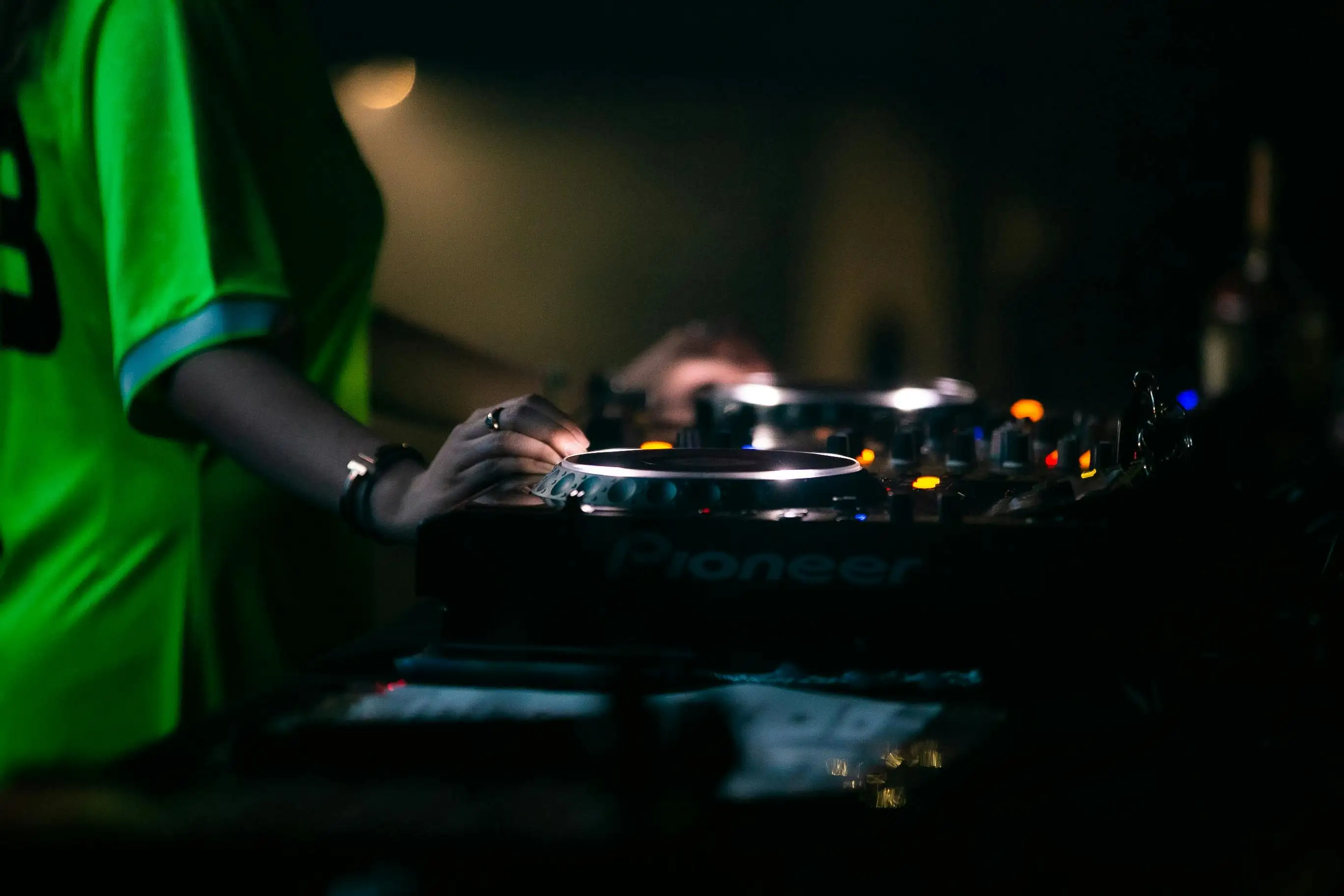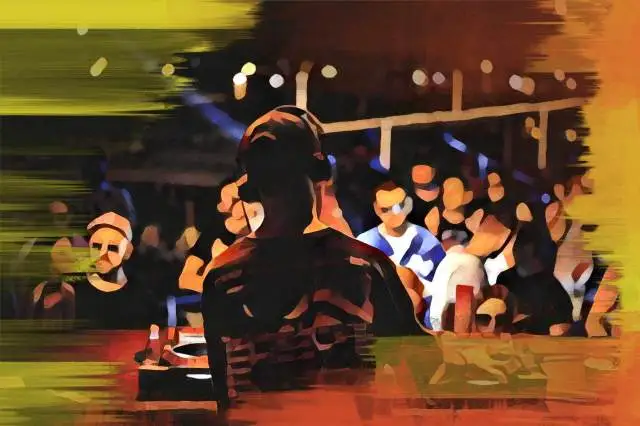One of the most popular subgenres of electronic dance music is house music, known for its heart-throbbing BPMs and undeniable four-on-the-floor rhythmic structure. While house music brings together elements from a wide variety of genres, there are some basic chord progression patterns that come up time and time again.
Below, we'll walk you through some of the most common chord progressions behind house music so that you can start creating impactful chord changes in your own productions.
Key Characteristics of House Music
Before diving into some of the most popular house chord progressions, it's critical to understand the key components behind any house track. After all, if these house chord progressions aren't paired with the right elements, they won't be as impactful:
The Prevalence of Samples
House music gets its name from the warehouses in which the style was generated, but the genre pulls from many types of music, somewhat due to its association with sampling. You'll find that house music is frequently centered around a sample from an older song or library.
Driving Bass Lines and Melodies
House music is known for its fairly limited nature. Typically, the rhythm in house music is simple and repetitive, with the main variation over the course of the song being a melody, sample, or driving bass line. Due to the lean and mean structure, your individual production choices are that much more impactful.
"Four on the Floor" Beat Structure
House music typically resides between 110 and 130 BPM, with a "four on the floor" rhythm throughout. This pattern refers to kick drums on beats 1 and 3, or 1, 2, 3, 4 often with a snare or clap on beats 2 and 4. To get that signature house groove, hats or other small higher-frequency percussive elements are added to the upbeats between notes.
Understanding Chord Notation
Before we dive into some of the most famous house chord progressions, it's important to understand the way in which chords are written and notated. Don't worry if you're not a music theory buff - we'll explain the basics behind understanding chord notation with just a few sentences:
Essentially, each chord in a progression is assigned a number that corresponds with its position within a scale. A major chord is distinguished with an uppercase Roman numeral, while a minor chord has a lowercase Roman numeral. Each number speaks to a chord's numerical placement within the scale.
For example, the first chord of the C major scale is C major. So the I of the C major scale is C major. The second chord in C Major is D minor. So the ii of C major is D minor.
If you're not sure where a particular chord falls within sequences of others, simply look up the chords for the key you wish to create music in. Understanding the Roman numerals will allow you to unlock chord patterns, but understand that these patterns can be applied to essentially any key.

7 Common House Music Chord Progressions
Without further ado, here are some of the most common house chord progressions you might want to consider trying out in your tracks:
Repetition
Repeating a chord or vamping can be surprisingly effective: house music chords certainly do not have to be complex to be effective. Try repeating the same chord over time as a strong foundation for a pivotal melody or bass line in a song. You can try this with the one chord, five chord, or any other chord within the key of your track.
Two Chord Oscillation (Moving Between I, V, or Others)
Sometimes pivoting between two chords will be just enough variety to keep your house track engaging. Just listen to this shift from vi to IV in In the Name of Love by Martin Garrix & Bebe Rexha:
I V vi IV
You'll find that this chord progression is commonly used in pop music and has a sticky, catchy quality due to its pull back to the tonic chord. This same chord progression can be heard in songs like Titanium by David Guetta and Sia:
I IV V (Wake me up avicii)
Generally speaking, any use of these three chords is bound to be successful in a wide variety of contexts. You've probably heard a chord progression example of this pattern in the classic Wake Me Up by Avicii:
ii V I
This chord progression starts with a minor scale chord and might seem a bit odd, but not only house music utilizes this oddball progression. This jazzy progression sounds extra great with some added seventh chords for depth. You can hear this chord progression at work in Strobe by deadmau5:
III-vi-ii-V
This funky chord progression throws listeners for a loop with its unique delivery. The two minor chords sandwiched between the major bookends creates a cool, unique atmosphere as showcased in White Noise by Disclosure featuring AlunaGeorge:
This is a great progression to play with if you're looking to create deep house tracks or something that has bit more mystery than typical (yet effective) basic chords.
I VI IV V
If you're looking to create a progressive house banger, this chord progression will certainly get you one step closer. Hear it in action in tracks like Don't You Worry Child by Swedish House Mafia:
House Chord Progressions FAQ
Are you running into unexpected challenges while producing house music? Here are some commonly asked questions to help expand your understanding:
What chords are used in house music?
The chords you use in house music will vary from one song to the next, but it's common to have a pattern of chord progressions based on the genre of music. We cover several common house chord progressions above.
What is a good key for house music?
There isn't one good key for house music, though some music producers might anecdotally prefer to produce EDM music in F Major or F Minor. House music is a heavily sample-focused genre, so many producers craft house music chords based around a pivotal melody, sample, or vocal line rather than exclusively sticking to a single key.
What's the difference between house and deep house chords?
House music generally tends to be a bit more energetic and "happy" sounding than deep house. You may find that house music tends to be in a major key more often than deep house chords which are often in a minor key. Creating deep house chords is fairly similar to building house chords, just with a more atmospheric lens.
Should I use a minor chord in house music?
Absolutely! There are plenty of house music tracks that use minor chords and minor chord progressions. We share an example of one chord progression featuring a minor chord, III vi ii V, above. EDM chord progressions often incorporate both major and minor chords.
What key are most deep house chord progressions in?
Deep house music, relative to the broader umbrella of house music, tends to be a bit more introspective and moody. So, it's common to find that deep house chords are in a minor key. You might find deep house songs in D minor or A minor, for instance.
What is the most catchy chord progression?
The most catchy chord progression will likely vary from one person to the next, since what sounds good to you might sound great to another. However, a golden rule is to experiment with utilizing the one chord, five chord, and four chord in your progression: these chords often work well within the context of a plethora of genres.
In short, there is no one right way to make house music, but hopefully, sharing some common house chord progression combinations will spark some sonic inspiration. Have fun putting these minor and major chords to good use!





